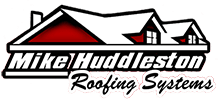Roof leaks are a common problem for many homeowners, causing damage to ceilings, walls, and belongings. Understanding the causes of roof leaks and how to prevent them can save you from costly repairs and frustration. Roof leaks can occur due to various reasons, ranging from weather-related issues to poor maintenance. Knowing what to look for helps you address potential problems before they escalate.
Water can enter your home through tiny cracks and gaps in the roofing materials. Over time, even small issues can become significant problems if not dealt with promptly. Regular inspections and maintenance play a crucial role in keeping your roof in good condition. By paying attention to the signs of wear and tear, you can take proactive steps to prevent leaks.
Preventing roof leaks involves a combination of proper maintenance, timely repairs, and understanding the environmental factors that pose risks. Whether you are dealing with winter snow, spring rain, or summer heat, each season brings challenges that can impact your roof. Being aware of these factors and adopting preventive measures ensures that your roof remains sturdy and leak-free throughout the year.
Identifying Common Causes of Roof Leaks
Understanding the common causes of roof leaks is essential for effective prevention. Several factors can contribute to leaks, and knowing what to look for can help you address these issues early.
- Damaged Shingles: Shingles protect your roof from the elements. Over time, they can become cracked, curled, or missing, leading to leaks. Regularly inspecting your shingles can help you spot problems before they worsen.
- Clogged Gutters: Gutters direct water away from your roof and foundation. When they become clogged with leaves and debris, water can overflow and seep into your roof, causing leaks. Cleaning your gutters regularly can prevent this issue.
- Flashing Issues: Flashing is used around chimneys, vents, and other protrusions to seal gaps and prevent water from entering. If the flashing is damaged or improperly installed, it can lead to leaks. Inspecting and maintaining flashing ensures it remains effective.
- Skylight Problems: Skylights can enhance your home’s natural light but can also be a source of leaks if not correctly sealed. Checking the seals and ensuring proper installation can prevent leaks around skylights.
- Aging Roof: An older roof is more susceptible to leaks as materials deteriorate over time. Regular inspections and timely repairs or replacements can help extend the life of your roof and prevent leaks.
Seasonal Factors That Contribute to Roof Leaks
Different seasons bring various weather conditions that can impact your roof and cause leaks. Understanding these seasonal factors can help you take preventive measures to protect your roof.
- Winter: Snow and ice can accumulate on your roof, leading to ice dams. Ice dams form when warm air from your home melts snow on the roof, which then refreezes at the edges. This ice buildup can force water under the shingles, causing leaks. Ensuring proper attic insulation and ventilation can prevent ice dams.
- Spring: Spring showers and storms can expose weaknesses in your roof. Heavy rains can find their way into tiny cracks or gaps, leading to leaks. Inspecting your roof after storms and addressing any damage promptly can prevent water infiltration.
- Summer: The intense heat of summer can cause roofing materials to expand and contract, leading to cracks and splits. UV rays can also degrade materials over time. Regular maintenance, including sealing cracks and applying protective coatings, can help your roof withstand the summer heat.
- Fall: Falling leaves can clog gutters, and the increasing moisture can create perfect conditions for leaks. Cleaning gutters and checking for blockages before winter sets in can prevent water from backing up and causing leaks.
Effective Prevention Methods for Roof Leaks
Preventing roof leaks involves a combination of regular maintenance and timely interventions. Here are some effective methods to keep your roof in top condition.
- Regular Inspections: Schedule regular roof inspections, especially after severe weather events. Look for signs of damage like missing or damaged shingles, cracks, or wear around flashing and vents.
- Keep Gutters Clean: Ensure your gutters are free from leaves, dirt, and debris. Clogged gutters can cause water to overflow and seep into your roof. Cleaning them regularly allows water to flow freely away from your roof and home.
- Trim Overhanging Branches: Trees with branches that extend over your roof can pose a risk. Falling branches can damage shingles, and leaves can clog gutters. Trim back any overhanging branches to protect your roof.
- Seal and Caulk Vulnerable Areas: Pay attention to areas around chimneys, skylights, and vents. Use caulk to seal any gaps and prevent water from penetrating these vulnerable spots.
- Check Attic Ventilation: Proper attic ventilation helps regulate temperature and moisture levels. This can prevent ice dams in winter and reduce the risk of shingles cracking in summer. Ensure your attic has adequate ventilation to promote airflow.
- Apply Roof Coatings: Protective roof coatings can add an extra layer of defense against the elements. These coatings can reflect UV rays, reduce heat damage, and help seal minor cracks and leaks.
When to Contact a Professional for Roof Leak Repairs
While some minor roof maintenance tasks can be handled by homeowners, certain situations require the expertise of a professional roofing contractor. Knowing when to call for help is crucial in preventing further damage to your home.
- Persistent Leaks: If you’ve noticed a leak that doesn’t go away despite your efforts to fix it, it’s time to call a professional. Persistent leaks can indicate a more significant underlying issue that needs specialized attention.
- Visible Damage: Large areas of missing shingles, significant cracks, or sagging sections of your roof are clear signs you need professional help. These issues can compromise the structural integrity of your roof and require immediate repair.
- Roof Age: Older roofs are more susceptible to leaks and other problems. If your roof is approaching its expected lifespan, consider a professional inspection to determine if repairs or a replacement are necessary.
- Water Stains on Ceilings or Walls: Water stains inside your home often indicate a leaky roof. A professional can trace the source of the leak and provide a long-term solution, preventing further damage to your home interior.
- Safety Concerns: Climbing onto your roof can be dangerous, especially for large repairs or in bad weather. A professional roofer has the experience and equipment to perform the job safely and efficiently.
Conclusion
Understanding the common causes of roof leaks and how to prevent them helps keep your home safe and dry. Regular inspections and maintenance can prevent small issues from turning into major problems. By addressing seasonal factors and using effective prevention methods, you can extend the life of your roof and avoid costly repairs. When roof leaks do occur, knowing when to contact a professional ensures that issues are resolved quickly and effectively.
Don’t wait until a small problem turns into a significant headache. For expert roofing services and reliable roof leak repairs, contact Mike Huddleston Roofing Systems. Our experienced team is ready to help you maintain a strong and leak-free roof. Call us today for all your roofing needs. Your home deserves the best protection!

